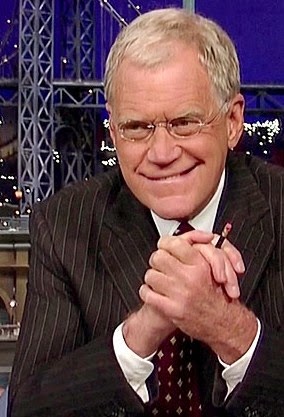If you’re here reading this you’ve probably at least heard his name. Ernie Kovacs died nearly 50 years ago, in January of 1962, victim of a car crash ten days shy of his 43rd birthday. You’ve probably seen pictures of his face with those dark eyebrows, moustache and constantly lit cigar, looking like some sort of Hungarian Groucho Marx.
Kovacs said some smart things, including television is called a medium “because it’s neither rare nor well done.”
What you’ve probably never seen is Kovacs in action, aside from a few clips. Thank God for The Ernie Kovacs Collection (Shout! Factory, SRP $69.97).
The 6 disc, 13-hour DVD boxed set is a TV archivists delight. Crammed with extras, including a 44-page booklet, it does Kovacs right.
The discs are filled with the mainly black and white, often highly experimental programs Kovacs did throughout the ’50s and into the ’60s. He headlined around 20 shows, sometimes more than two or three at once, sometime on competing networks–at the same time. Kovacs worked for ABC, CBS, NBC and Dumont. He’d have burned through Fox, Comedy Central and be on to the History Channel by now.
One reason he kept bouncing around is not everybody got him. Kovacs shows are as eccentric as he is, and eccentric tends to burn out fast on television. He seemed very modern in that his shows are kind of designed for short attention spans. A skit will commence and when it starts to get boring it will end and something completely different will happen next.
Some of his humour seems macabre and creepy today. A little kid is bugging Kovacs the carpenter in a quickie “black out” sketch. The carpenter is drilling through a piece of wood with a hand screw. The kid puts on a Halloween mask. The carpenter screws through the wood into the kids head–rotating it around with every turn of the screw.
 Sometimes sketches would be intercut with stark black and white images of sound waves while Kovacs would wail tunes from the Three Penny Opera. His signature bit, the Nairobi Trio, was almost nightmarish. Kovacs, wife Edie Adams and a third person (sometimes revealed as a celebrity pal like Frank Sinatra or Jack Lemmon) would don grotesque rubber gorilla masks, bowler hats, band uniforms and perform “Solfeggio”–or at least beat each other over the heads to the jaunty tune. Mel Brooks says it provoked “dangerous laughter.”
Sometimes sketches would be intercut with stark black and white images of sound waves while Kovacs would wail tunes from the Three Penny Opera. His signature bit, the Nairobi Trio, was almost nightmarish. Kovacs, wife Edie Adams and a third person (sometimes revealed as a celebrity pal like Frank Sinatra or Jack Lemmon) would don grotesque rubber gorilla masks, bowler hats, band uniforms and perform “Solfeggio”–or at least beat each other over the heads to the jaunty tune. Mel Brooks says it provoked “dangerous laughter.”You can see Kovacs influence on a lot of TV that followed. Laugh-In producer George Schlatter talks in one of the DVD extras about how Kovacs style and energy influenced Laugh-In. Chevy Chase and David Letterman have both acknowledged they were fans of the comedian. Craig Ferguson, born after Kovacs died, pays homage to him every night when he breaks out the puppets or dismisses viewer email (not unlike Kovacs’ oblivious Mr. Question Man).
A feature film based on Kovacs life, starring, say, Robert Downey Jr., needs to happen. The man has an intriguing off-screen life, ringing up huge gambling debts, engaging in practicle jokes, never sleeping. His headstone actually reads, “Nothing in moderation.”
That he dared to put his personal vision out there, and that Adams spent a great deal of the remainder of her life (she died in 2008) collection and archiving these shows, is a television miracle. Kovacs is an acquired taste, but Shout! has made it possible to acquire it.
I wrote more about The Ernie Kovacs Collection for The Canadian Press. You can read that story here.







